The BEST episodes of Nature season 30
Every episode of Nature season 30, ranked from best to worst by thousands of votes from fans of the show. The best episodes of Nature season 30!
Transport viewers to faraway places ranging from the steamy plains of Africa to the splendors of cold Antarctica. The main focus is on animals and ecosystems around the world.

#1 - River of No Return
Season 30 - Episode 11 - Aired 4/18/2012
Central Idaho's Frank Church--River of No Return Wilderness is the largest contiguous wilderness area in the lower 48 States. Endless rugged mountains, wild rivers, forests and deep canyons define this land--home to numerous species of wildlife, including wolves, who have just returned after 50 years of near absence. A young couple, Isaac and Bjornen Babcock, chose this wilderness for their year-long honeymoon. But what begins as a romantic adventure becomes something much greater for the couple--and a tale of hope and celebration for every life trying to make it in the unforgiving heart of the wilderness.
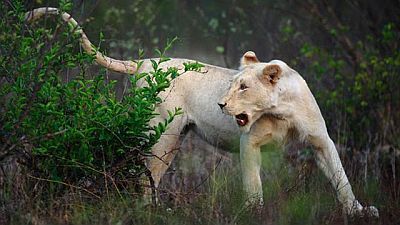
#2 - The White Lions
Season 30 - Episode 12 - Aired 5/9/2012
Only three white cubs have reached adulthood in the wilds of South Africa since white lions were first documented there in 1975. Now, two white cubs, sisters, have beaten the odds, surviving all the challenges of their youth with the help of two remarkable lionesses—their mother, Matimba, and their aunt, Khanya. Without an adult male lion to protect their small pride, Matimba and Khanya must rely solely on their own knowledge, strength and courage to protect their family.

#3 - My Life as a Turkey
Season 30 - Episode 4 - Aired 11/16/2011
After a local farmer left a bowl of eggs on Joe Hutto's front porch, his life was forever changed. Hutto, possessing a broad background in the natural sciences and an interest in imprinting young animals, incubated the eggs and waited for them to hatch. As the chicks emerged from their shells, they locked eyes with an unusual but dedicated mother. Deep in the wilds of Florida's Flatlands, Hutto spent each day living as a turkey mother, taking on the full-time job of raising sixteen turkey chicks. Hutto dutifully cared for his family around the clock, roosting with them, taking them foraging, and immersing himself in their world. In the process, they revealed their charming curiosity and surprising intellect. There was little he could teach them that they did not already know, but he showed them the lay of the land and protected them from the dangers of the forest as best he could. In return, they taught him how to see the world through their eyes. Based on his true story, My Life as a Turkey chronicles Hutto's remarkable and moving experience of raising a group of wild turkey hatchlings to adulthood.

#4 - Jungle Eagle
Season 30 - Episode 3 - Aired 11/9/2011
Harpy eagles are the most powerful birds of prey in the world. Standing three feet tall, with a six-foot wingspan and razor-sharp talons the size of bear claws, these birds are the heavyweight hunters of the South American rainforest. They are the top predators in the jungle canopy, feeding regularly on tree-dwelling mammals like monkeys and sloths. But scientists know very little about harpy eagles because their numbers are few and their habitat is large. Hidden in the branches of the canopy, they are rarely seen, let alone filmed. After locating a nest 130 feet above ground in an enormous Ceiba tree, wildlife filmmaker Fergus Beeley and his team of cameramen install a "nest cam" to monitor a harpy family. Over the course of a year, they struggle to document the lives of these elusive birds in Venezuela's Orinoco River jungle. The team comes dangerously close to the notoriously aggressive birds, risking serious injury for the chance to gain new insight into these Jurassic-like creatures. NATURE enters the secret world of the harpy, and provides a treasure trove of new information about this majestic species.

#5 - Kangaroo Mob
Season 30 - Episode 5 - Aired 1/11/2012
In the past 50 years, the eastern gray kangaroo population around Canberra, Australia’s capital city, has exploded from a few hundred to tens of thousands. Forced from the surrounding drought-stricken hills, hungry kangaroos have done their best to adapt to city life, dining on city parks and suburban lawns—though they do pay a price for their meals. Each year, thousands of kangaroos lose their lives in collisions with cars on busy roads, causing injuries and property damage of more than a million dollars in the process. Overgrazing by large numbers of kangaroos has also created stress on the environment. It’s all led to a government policy of culling, and an emotional public dispute between those who support reducing kangaroo numbers, and those who are appalled by the prospect of killing this beloved Australian icon. The government’s culling “solution” has led some Canberra residents to seek out new, innovative, and kangaroo-friendly ways to regulate the surging population. Can they be relocated, or can their numbers be controlled through forced contraception? Following the stories of several urban kangaroos, Kangaroo Mob reveals how these metropolitan marsupials manage to survive the city, and documents the ongoing debate on how best to manage them.
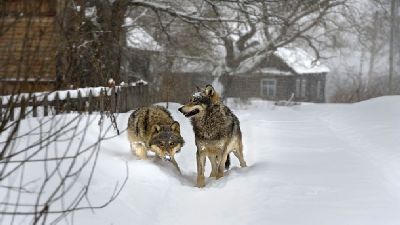
#6 - Radioactive Wolves
Season 30 - Episode 1 - Aired 10/19/2011
In 1986 a nuclear meltdown at the infamous Chernobyl power plant in present-day Ukraine left miles of land in radioactive ruins. Residents living in areas most contaminated by the disaster were evacuated and relocated by government order, and a no-man’s land of our own making was left to its own devices. In the ensuing 25 years, forests, marshes, fields and rivers reclaimed the land, reversing the effects of hundreds of years of human development. And surprisingly, this exclusion zone, or “dead zone,” has become a kind of post-nuclear Eden, populated by beaver and bison, horses and birds, fish and falcons – and ruled by wolves. Access to the zone is now permitted, at least on a limited basis, and scientists are monitoring the surviving wildlife in the area, trying to learn how the various species are coping with the invisible blight of radiation. As the top predators in this new wilderness, wolves best reflect the condition of the entire ecosystem because if the wolves are doing well, the populations of their prey must also be doing well. Accordingly, a key long-term study of the wolves has been initiated to determine their health, their range, and their numbers. Radioactive Wolves examines the state of wildlife populations in Chernobyl’s exclusion zone, an area that, to this day, remains too radioactive for human habitation.
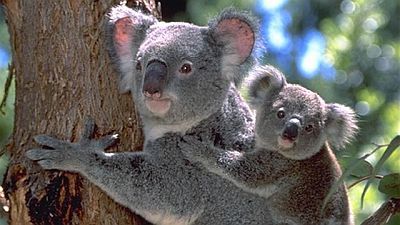
#7 - Cracking the Koala Code
Season 30 - Episode 13 - Aired 5/16/2012
Loud bellows ring out from a small pocket of forest surrounded by dense suburbs and busy roads in Brisbane, Australia. It’s mating season for koalas. Their thunderous roars are difficult to reconcile with the familiar perception of them as cuddly creatures. But these complex choruses of bellows and grunts have become invaluable for those striving to learn more about the species. Cracking the Koala Code explores the day-to-day dramas of an extended family of koalas, seen through the eyes of the scientists studying their every move and vocalization. Biologists Dr. Bill Ellis and Sean Fitzgibbon are engaged in ground-breaking science sponsored by the San Diego Zoo. Using 3G solar-powered mobile phones to record koala vocalizations, and applying their recordings in the field to evoke koala responses, they have managed to decipher some of the koalas’ communications. These “cracks” in the koala communication code have provided new insights into the basic language and social structure of these marsupials who are dealing with social pressure, conflict, disease, and the external stresses of living in an increasingly urbanized world.
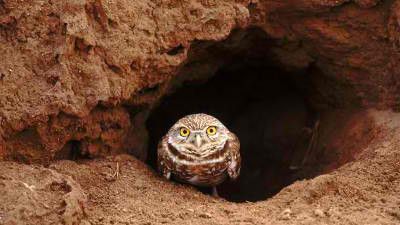
#8 - The Animal House
Season 30 - Episode 2 - Aired 11/2/2011
Skyscrapers towering over major cities or spectacularly-designed bridges often come to mind when we think of great feats in architecture and engineering. However, some of the most amazing, creative, and innovative structures on earth are not man-made or urban at all, but residences built by animals in the natural world. Termites across Africa's plains build ten-foot-high mounds, temperature-controlled high-rises maintained by solar power and complete with flood contingency plans. Leaf and grass cutter ants move 40 tons of earth to create subterranean cities with highways, homes, farms, trash pits, and nurseries for 12 million residents. Army ants create living houses made entirely of their own bodies. Cave swiflets mold crystal nests from their gluey saliva. New Guinea's male Vogelkop bowerbirds, meticulous interior decorators, use their artistic visions to woo. Beavers build enormous dams, changing the landscape to create a safe environment for their lodges. And hummingbirds delicately weave tiny camouflaged cradles out of cobwebs, grass, twigs, and leaves. Guided by instinct, animal architects build an remarkable variety of elaborate dwellings with their simple supplies. Every house suits the needs of its owner, to shelter and protect. NATURE investigates what goes into making a home when you're wild and cost is not a factor. They may be single-use, multi-generational, or multi-purpose; they may be anything from a small depression in the sand to a many-chambered tunnel, a nest, a burrow, or a mound, but for animals big and small, these dwellings are always impressive home sweet homes.

#9 - Ocean Giants: Giant Lives
Season 30 - Episode 8 - Aired 2/22/2012
Whales and dolphins conjure a deep sense of wonder in us that’s hard to explain. From the Arctic to the Amazon, this groundbreaking three-part series goes on a global expedition with world-renowned underwater cameramen, Doug Allen (Planet Earth) and Didier Noirot (Jacques Cousteau’s cameraman), as they capture spellbinding footage of these marine mammals. Ocean Giants looks at how cetaceans hunt, mate, and communicate, and follows scientists as they strive to uncover new insights about these animals. The first hour, Giant Lives, enters the world of the great whales. In the Arctic, giant bowhead whales survive the freezing cold wrapped in fifty tons of insulating blubber two-feet thick, making them the fattest animals on the planet. But the biggest animal on the planet is the blue whale. Measuring a hundred feet long, and weighing in at 200 tons, it is double the size of the largest dinosaur.
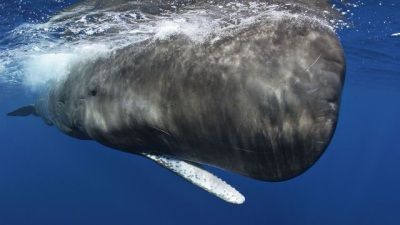
#10 - Ocean Giants: Voices of the Sea
Season 30 - Episode 10 - Aired 2/22/2012
Whales and dolphins conjure a deep sense of wonder in us that’s hard to explain. From the Arctic to the Amazon, this groundbreaking three-part series goes on a global expedition with world-renowned underwater cameramen, Doug Allen (Planet Earth) and Didier Noirot (Jacques Cousteau’s cameraman), as they capture spellbinding footage of these marine mammals. Ocean Giants looks at how cetaceans hunt, mate, and communicate, and follows scientists as they strive to uncover new insights about these animals. Marine mammals’ extrasensory perceptions and communication skills are the focus of Voices of the Sea, the final hour of the series. Whales and dolphins depend on sound to function in their ocean home. They use ultrasound to see inside other creatures, clicks and whistles to speak, and echolocation to navigate and hunt in the pitch-black depths.
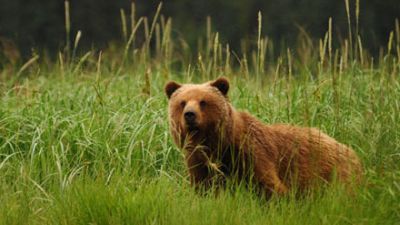
#11 - Fortress of the Bears
Season 30 - Episode 6 - Aired 1/25/2012
Alaska’s Admiralty Island is home to an estimated 1800 brown bears, the largest concentration of bears in the world. Nearly 100 miles long and 20 miles wide, it is half the size of Yellowstone National Park, yet it sustains four times more grizzlies. The native Tlingít people call this island “Kootznoowoo,” meaning “Fortress of the Bears.” It is a place where bears depend on fish, fish depend on trees, and the trees depend on fish-eating bears to spread the nitrogen rich bodies of salmon throughout the forest. Everything depends on the annual salmon run. When a change in the weather keeps the salmon from arriving, the entire ecosystem is affected. A La Niña winter has cooled the water to two degrees below normal, keeping the salmon out of the streams and delaying the run. It’s the worst salmon season in the last 40 years. As the bears wait for the salmon, they hunt and scavenge for anything they can find to supplement their unsatisfying diet of grass. The receding tide offers unique opportunities, and one young bear demonstrates a remarkable talent for clamming. But the feast is short-lived. With the passing season showing no sign of fish, the bears become increasingly gaunt and desperate. Will the salmon finally make their way up the streams of Admiralty Island? And will the bears survive until they do?
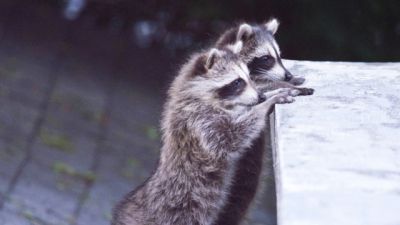
#12 - Raccoon Nation
Season 30 - Episode 7 - Aired 2/8/2012
Are we, in an effort to outwit raccoons, actually making them smarter and unwittingly contributing to their evolutionary success? Are the ever more complex obstacles that our fast-paced urban world throws at them actually pushing the development of raccoon brains? In this film, scientists from around the world share their thoughts and work to help explore this scientific theory. Attempting to do something that has never been done before, they closely follow a family of urban raccoons as they navigate the complex world of a big city.
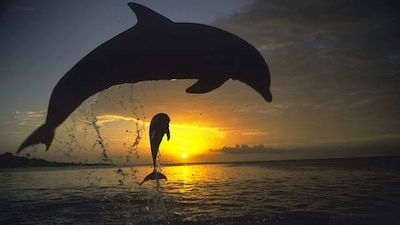
#13 - Ocean Giants: Deep Thinkers
Season 30 - Episode 9 - Aired 2/22/2012
Whales and dolphins conjure a deep sense of wonder in us that’s hard to explain. From the Arctic to the Amazon, this groundbreaking three-part series goes on a global expedition with world-renowned underwater cameramen, Doug Allen (Planet Earth) and Didier Noirot (Jacques Cousteau’s cameraman), as they capture spellbinding footage of these marine mammals. Ocean Giants looks at how cetaceans hunt, mate, and communicate, and follows scientists as they strive to uncover new insights about these animals. The second hour, Deep Thinkers, explores the cognitive and emotional lives of dolphins and whales. Like us, cetaceans have special brain cells, spindle cells, that are associated with communication, emotion, and heightened social sensitivity. These cells were once thought to be unique to us, but research is now showing that whales and dolphins may have up to three times more spindle cells than humans.